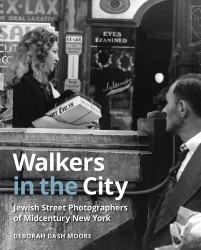For anyone interested in knowing who’s Jewish among cartoonists, actors, directors and all others engaged in cultural production, this is a fantastic book. It names names and gives juicy tidbits on various people — like the fact that Shelly Winters, a former Miss Ozone Park, had a father who was “a Brooklyn haberdasher convicted of arson.” If such facts are of interest, this is an indispensable book.
Unfortunately, it falls short as a scholarly work. First, its very definition of ‘Jewishness’ is inchoate. Buhle notes that “the Yiddish language was an emerging territory for the artistic vernacular” and that Jews were “in the right place at the right time,” which contributed to their involvement in cultural production. Other factors that are mentioned are radicalism and the fact that “the Jew who shunned both the synagogue and the whorehouse found a solution in the theater.” This is a curious combination of sources and, with its emphasis on Yiddish, the book eliminates a large portion of the Jewish community— Sephardim — who have themselves contributed to American cultural life (think Edie Gormé and Lainie Kazan). In addition, the notion of ‘Jewishness’ is so broad as to include non-Jews. Buhle points out that cartoonist R. Crumb is “genetically gentile, but cryptically Jewish.” Such a statement belies either an essentialist view of Jewishness or an emphasis on culture and community. Whence comes Crumb’s Jewishness? What does it mean to be Jewish and what is ‘Jewishness’? Similarly, according to Buhle, director Frank Capra, born in Sicily, “never understood how much he owed either to radicalism or to a certain Jewishness…”
Second, assertions — and in some instances potentially libelous comments — are simply undocumented. While the book has numerous footnotes, the interested reader wanting to know where to learn more about such intriguing points as the fact that the Anti- Defamation League was “best known in later decades for business class political-economic views and its quiet collaboration with investigative agencies like the FBI against radical unionists and left-wing civil rights activists…” is left to wonder about the source of this serious charge against a major Jewish organization.
Finally, the book’s central conceptual principle, “reflexiveness,” is simply undefined for the novice reader. While I realize that the concept is a common one in post- Modern analysis, readers would have benefited from a working definition of this term.





